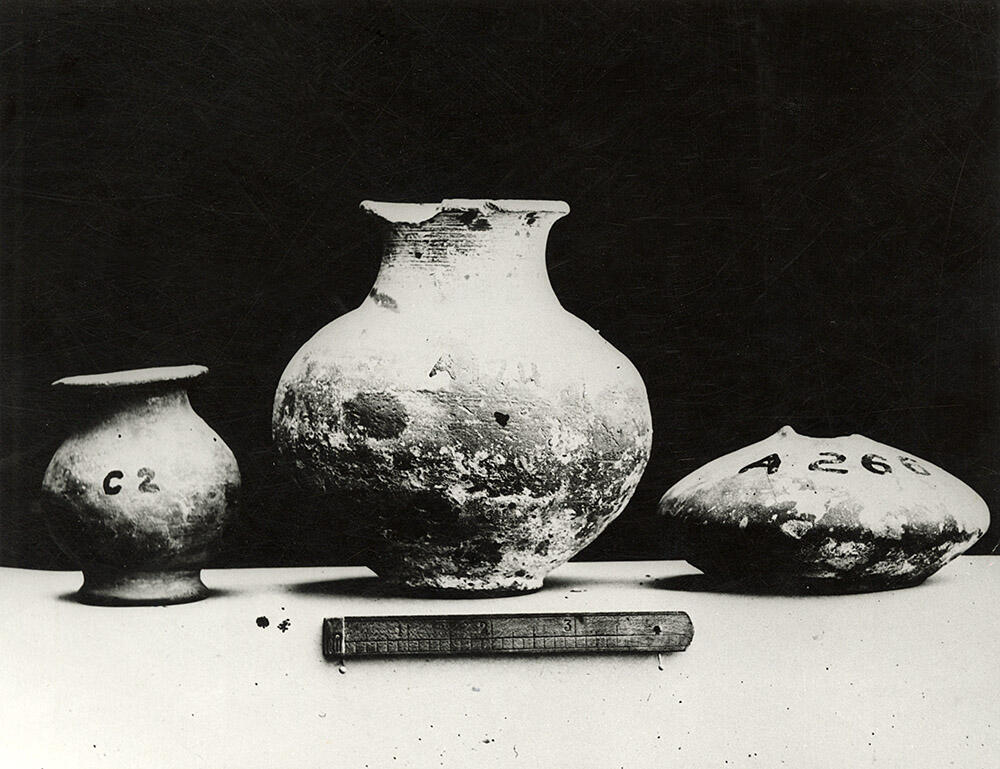Daya Ram Sahni found objects he quickly called "inkpot[s] of the shape used in old type Pathsalaif and maktabs to this day" (p. 13). One of these was found in Trench C – "No. C. 2 has three holes in the mouth for the string" (p. 13) – the other two on Mound F.
It is interesting that he so quickly saw two of these objects as inkpots, for there is no other evidence that Indus people wrote in ink on paper or parchment, or even on palm leaves which some have speculated may have been the case. At the same time, if indigo was a dye used in ancient Indus times it is not unreasonable to suppose that it may have been used, as it has been until modern times, to make ink, although there is no evidence for this. That Sahni saw the holes in C 2 as useful for string is also interesting; it could have been suspended around the neck, or hung for safety.
"Pottery vessels with holes in the neck to secure a lid are very uncommon in the excavations at Harappa. It is not known what would have been put into this vessel, but it was probably a valuable liquid or material and the lid was secured to keep the contents from spilling. The people at Harappa did have many types of pigments used to paint pottery including red, black and white pigments. Some Indus script signs were painted on pottery so it is not unlikely that they also painted the script on perishable materials. So far however, no examples of script on birch bark or palm leaf manuscripts has been recovered."
- Jonathan Mark Kenoyer, 2021.
C. 2 Ink-pot (height 2 3/4") with three holes in the rim for suspension.
A. 174 Lota (height 5"). Type 5. Found in large chati.
A. 266 Ink-pot (height 1 3/4") with broad low body.
[Appendix D] 2755 Two earthenware inkpots (C 2 and A 266) and a lota (A 174).
[Original caption] Two earthenware inkpots

